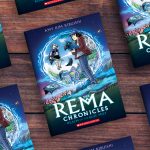I grew up in a factory town north of Detroit in the 1980s. It was a time when, due to the auto recession, anti-Japanese sentiment was incredibly high. Most of the families in my town worked at the local GM plant and when layoffs started, I began seeing bumper stickers that said things like “JAP CRAP” in school parking lots. Kids I had known for years said things in class like, “I guess it was just the way that I was raised, but I hate Japanese people.” One student asked me if my grandfather was a kamikaze pilot, and every day kids made karate gestures towards me and pulled their eyes back in sharp slants. The most impactful for me, however, was a teacher who, on the anniversary of Pearl Harbor, said, “Katie, you’re Japanese. Why don’t you tell the class about what happened today in history.” I was in seventh grade. My response was to tell the class about the internment camps and the mass incarceration that happened to my family and 120,000 other people of Japanese descent following the attacks on Pearl Harbor. After I finished telling my story, my teacher paused.
“That never happened.”
“Yes, it did.”
“No, it didn’t.”
We went back and forth like that for some time, but I had been raised not to argue with my teacher, so I sat back, stunned. I come from a long line of teachers and had always considered the positive impact teachers have on their students. I imagined myself becoming a teacher one day. Never until that moment did I consider the harm that could happen in the classroom when a teacher refused to acknowledge the truth. It made me wonder what other lies I was learning and who else was being told that their history never happened. A seed was planted that day.
My first job out of college was working as an assistant preschool teacher at a transitional housing center for women and children. That job led to another teaching job as a K-8 Spanish teacher and first-grade reading teacher in Detroit. Then, to become an artist, I moved to New York City where I became a teacher at a public school for ballet dancers. I taught Spanish, tutored the kids who were dancing professionally, became the guidance counselor, and when the middle school ELA/history teacher was fired, I did that, too. Also, I ran an internship program. I was 24 years old and profoundly unqualified. What I lacked in degrees and licenses, I made up for with a combination of energy and lack of oversight by the overwhelmed NYC Department of Education. Somehow, I survived that year and had an amazing experience. What I learned was that teachers have the most difficult job on the planet: full of the greatest joy and gratification (on a good day), and faced with all of society’s challenges on an hourly basis. The amount of creative thinking that it took to get through any given day was stunning.
After that year, I went to graduate school for my MFA in illustration. Compared to teaching, it was a breeze. I never strayed far from the classroom though. Once I finished my MFA, I was still trying to figure out how to make a living, so I returned to the same school to be the art teacher, where I stayed for 12 more years, two days a week. During that time, I also built my career as a muralist and worked in close collaboration with communities around the world on murals that told stories we don’t hear every day. I’ve done many projects in different kinds of correctional facilities, museums, schools, and hospitals–always searching for the untold stories–and working in partnership with people who have lived the experience being explored in the project, centering their stories and voices.
When I make books, I am always thinking of the teacher. Many artists think of the parent at the bookstore buying their book. Of course, that is also a delight and a dream. But when I am making books, my greatest hope is that the books end up in the hands of a teacher, sitting with a group of children, reading together; asking the open-ended questions that help all of us start to see one another more clearly.
When I wrote Dad Bakes, I was thinking about all of the people I know who have been incarcerated. I was also thinking about the incarceration of my own family during WWII. I was thinking about the impact incarceration has over generations and also how we think about people who have been in trouble and incarcerated. How do we teach children that all of us are more than the worst thing we have done, and all of us are more than the worst thing that has happened in our lives? How do we encourage children to think beyond the binary of “good” and “bad”?
In Dad Bakes, my hope is that readers will notice every other thing about Dad and his daughter and see them both as full human beings. Dad is a baker, a gardener, a reader, a chef, a soccer player, and a movie lover. The daughter is independent, creative, patient, and connected. They love color and projects and time spent together. And no matter what, they are more than the time when their family was fragmented.
I know that in your classrooms, you are faced every day with the complicated lives of your students, and the complicated, divided world we all inhabit. My experience in the classroom taught me the complexity of your responsibilities and I stand in awe of teachers who do this as their life’s work. My hope is that my books can create some spaces for you to have open-hearted conversations around topics that feel stigmatized, awkward, sensitive, and otherwise hard. The characters I’ve created in my books are created lovingly, inspired by people I’ve known along the way, like the students in your classrooms. I hope they will see themselves in the pages or that they will see places to connect. Maybe I don’t know what it’s like to have a parent who is incarcerated, but I know what it is to miss someone. I also know what it is to have to wait for something. I know what it is to feel misjudged. There are so many places for connection, no matter the backstory of your students.
Resources:
About Dad Bakes: https://www.katieyamasaki.com/books/dad-bakes
Dad Bakes Activity Kit and Teddy Bear Bread Recipe: https://www.katieyamasaki.com/resources
Examples of Murals: https://www.katieyamasaki.com/2010-2019/ifwallscouldtalk1
Mural Video: https://www.katieyamasaki.com/2010-2019/novo






